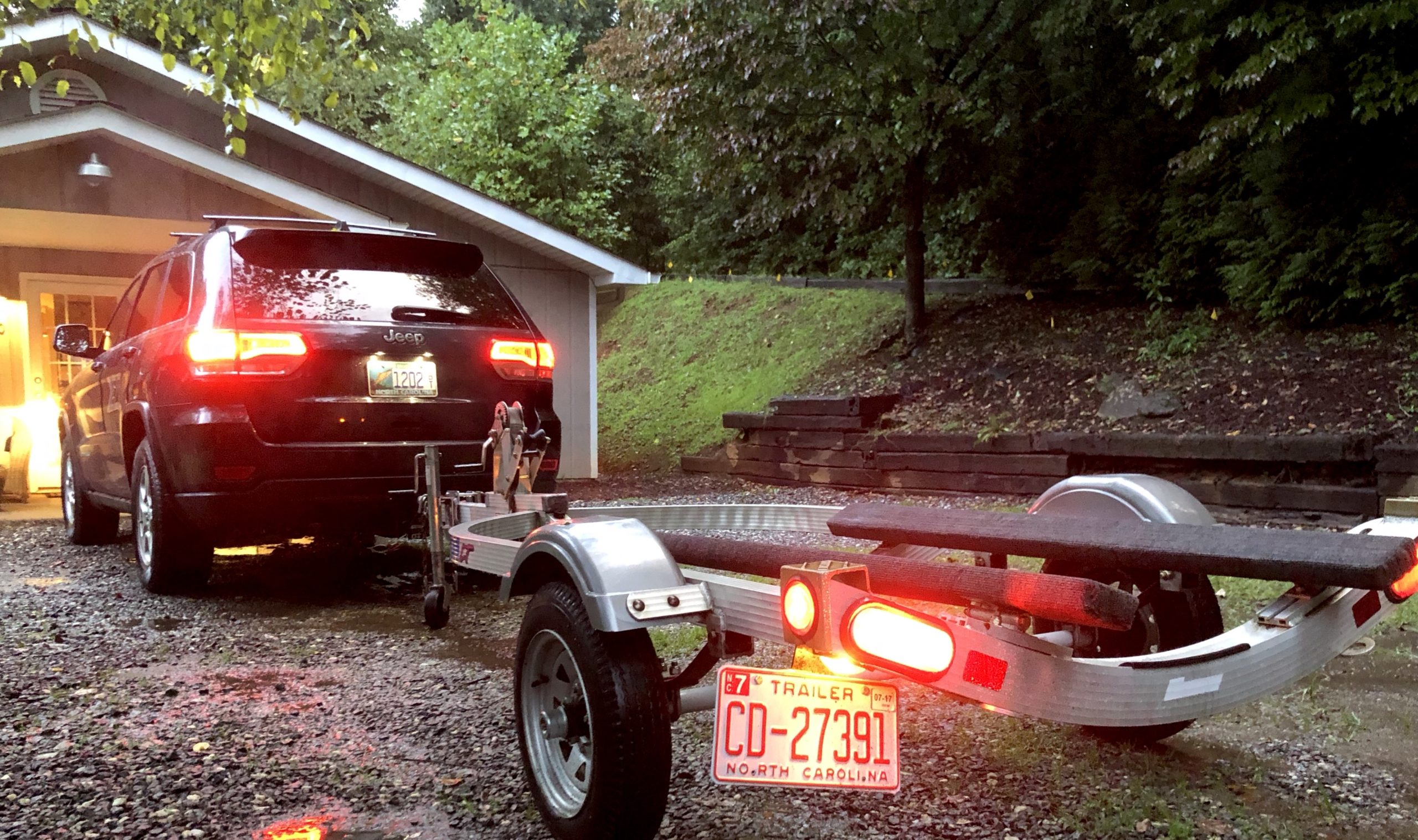I plugged in the last wire into the trailer hitch as darkness descended. Moments from cranking the ignition on my Jeep, I realized the moment of truth had arrived.
Either the lights were going to work, or they weren’t. It was a zero-sum game I played for several weeks while trying to fix a trailer I had bought for my Flycraft, a fly-fishing raft I assumed I could car top. The key word in that sentence is assumed. The raft is way too bulky to hoist on my Grand Cherokee roof after a day of fishing.
So it was back to the drawing board and I decided to buy a trailer off Craig’s List. When I first got the trailer home, everything seemed fine. Even though it was a 2003 Triton LT, the original owner had kept it in good shape. There was very little rust or wear and tear.
I paid $500. A very fair price.
With a Trailer, One Thing Leads to Another
The problems started as soon as I hooked up the lights to my Jeep. Everything worked, except the left turn signal.
I told myself not to panic. Maybe a bulb or a loose connection? Worst-case scenario: A bad tail light, right?
So I headed to Advance Auto thinking I was in for a quick fix. The bulb didn’t work. I replaced the tail light. That didn’t work. At that point, I knew I was in trouble. Think Wile E. Coyote with his ACME instructions after once again being bamboozled by the Road Runner. Ironically, that was my favorite cartoon as a kid. Whenever I have to fix something around the house, I sympathize with Mr. Wile E. Coyote.
In all, I made an additional nine or 10 trips to Advance Auto for …
Connectors
Adapters
Screws/bolts
Lubricant
Wire cutters
Fuses
Butt connectors
Wire terminals
Perseverance Is a Necessity with a Trailer
In a perfect world, I would have bought all of these things in one trip. Of course, that assumes I diagnosed the problem correctly, went right to the source and fixed it. Trailers and electronics don’t work that way, trust me. I started at the back of the trailer, probed and then worked my way forward to the Jeep.
Was it the vehicle or the trailer? I wasn’t sure.
Initially, I assumed it was the Jeep’s electronics. Having lived in the saltwater of Northeast Florida with a Gheenoe, the brine had left my connector and adapter with a bit of corrosion. I replaced those, hooked everything back up. Still no left turn signal. My test light showed no power to the proper (yellow) wire.
I was stumped, a bit disappointed, but not defeated. I took a few days off and tried again, searching for clues. During one particularly frustrating afternoon, I then noticed that the right turn signal was not working.
I looked toward my hitch and noticed that there was a green wire from a wad of electrical tape near the front of the wiring harness. Initially, I had thought the tape was designed to shorten the harness. It was not. Say hello to a re-attached harness.
I removed the tape, and a bundle of wires — some connected, some not —- emerged. The green wire, which controls the right turn signal, was loose. I had found the issue, but could I sort through the connections? There were six wires coming from the trailer and only five from the four-way, wishbone connector. Matching color to color usually works, but not in this instance. There were two ground wires coming from the trailer — unlike traditional trailers Triton runs separate grounds —- leaving me with no idea of where the second ground would go. With my old trailer, the ground wire was bolted to the metal frame. Triton trailers are aluminum. So much for that option.
Not sure what to do, I wired one ground to the black wire, and the other ground to the matching white, cranked up the car and nary a light came on. I disconnected everything and probed with the test light and soon discovered I had no power anywhere. I had regressed and was on the verge of a meltdown. I grabbed a beer and texted my dad, who told me to take a break: I had probably blown a fuse.
The next day, I called Triton to ask about the extra ground. Their rep told me to connect all three grounds together. Simple. It was back to Auto Zone twice to mix, match and test fuses. Once I navigated the maze of the Jeep’s fuse box, I got power back to the hitch. On a roll, I connected the loose wires of the harness back together with electrical tape. I checked for power at the turn signal. Eureka. The current finally flowed.
The Road Less Traveled with a Trailer
I had a decision to make. Either I wing it with electrical tape and hope for the best. Or, better yet, I secure all of the questionable connections with heat shrink. Back to Advance Auto Parts for the latter.
When I showed up at the store, the clerks were ready to greet me.
“If you keep showing up here, we’re going to have to hire you,” one said.
“I’m close. This is my last trip,” I replied.
It was about six in the evening. I had about two hours left before darkness settled in.
I took my time with each wire. First I connected, then I crimped, then I heated and sealed.
I hooked up the trailer as the sun set over the North Carolina mountains. And the lights came on.
Trailer horror stories of your own? Trailer advice? Let us know know on one of our social media pages.







